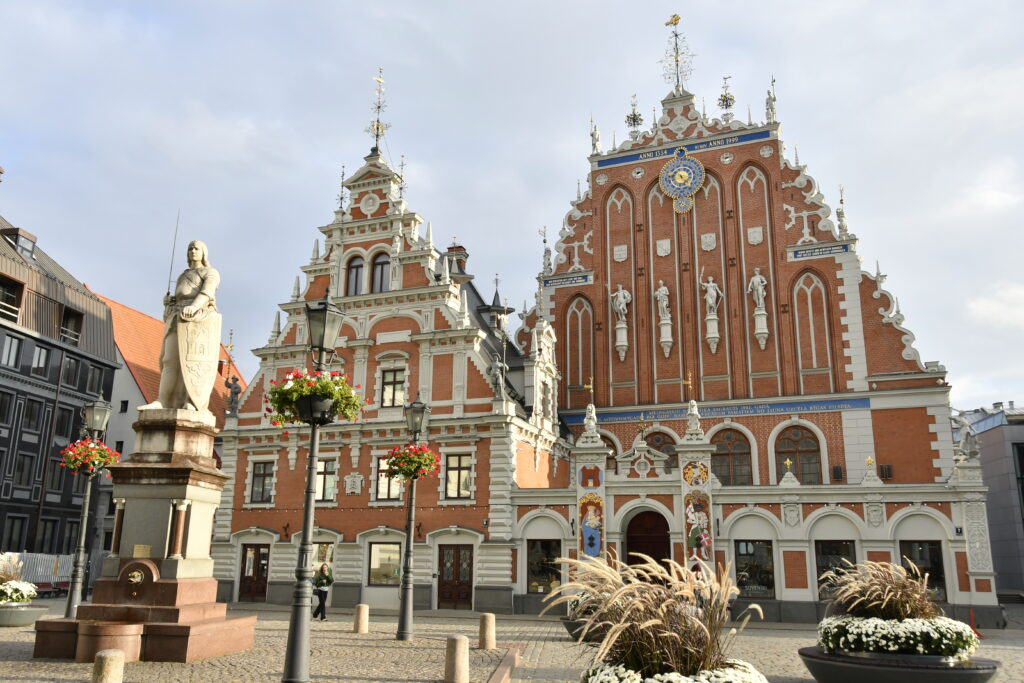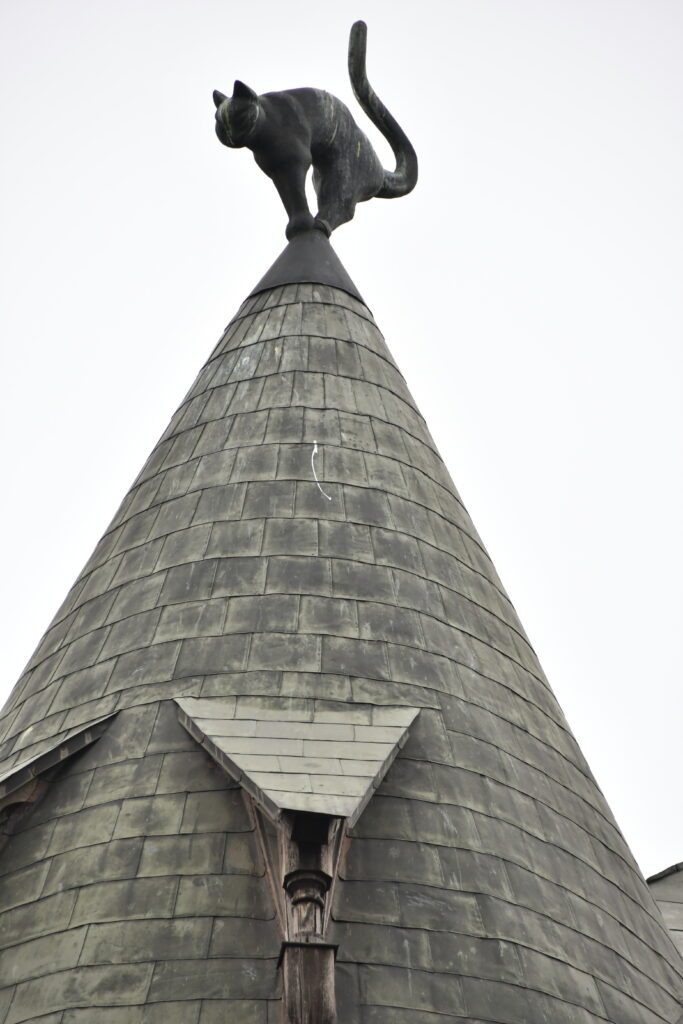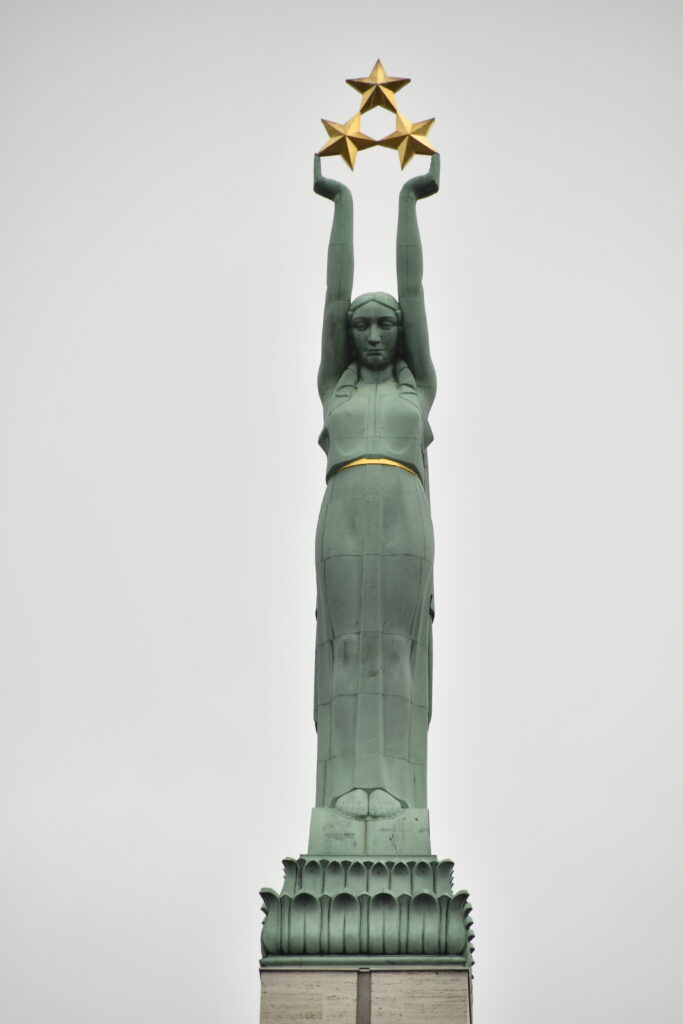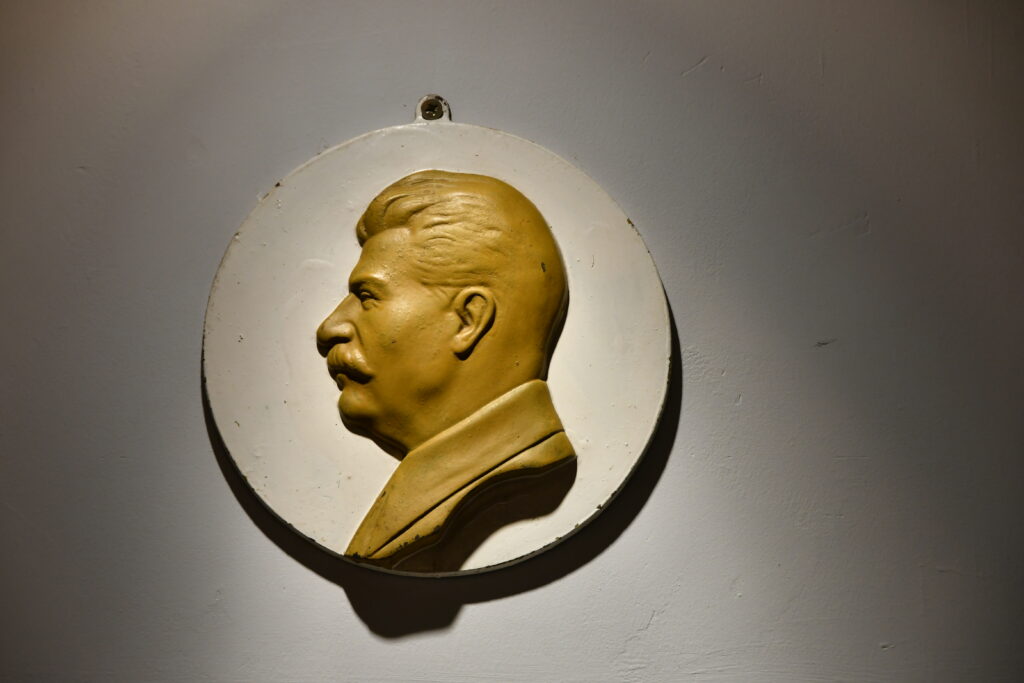THE HAIRY GIRAFFE… IN THE BALTIC COUNTRIES
After one week in the Baltic countries, it’s time to reflect. How did we experience this journey? What were our joys, disappointments, questions, doubts, and discoveries? This is not merely an assessment of a country but rather of a trip—how we perceived it individually and subjectively.
 We are François and Benjamin, Canadian and French giraffe hairstylists and travel enthusiasts. On this blog, discover our travels, tips, moods, and everything you need to become a giraffe hairstylist and embark on travelling the world. An honest blog with photos guaranteed 100% unfiltered and untouched. |
Benjamin’s Travel Reflections
I remember the first time I heard about the Baltic countries. It was about their accession to the European Union. I then discovered on a map the location of these three small countries, which seemed closer to Russia than to France.
Indeed, their recent history linked them, much against their will, to the USSR for many years. The three countries bear traces – and most likely wounds too – from this occupation. They also bear the scars of the Nazi era, just a few years prior.
Visiting the Baltic countries means confronting a recent history of rare violence. This violence is there, right in front of us. It materializes in torture chambers with inhuman creativity. On walls riddled with bullets, at the back of a courtyard, away from external eyes. In a memorial that emerges in the middle of the forest, the last witness of an extermination camp.
Visiting the Baltic countries means accepting to face history. Some visits are trying. But they admirably contribute to the duty of remembrance. Understanding the terrible atrocities of the two great totalitarianisms of the 20th century that took place in Europe, so close to home.
Because yes, the cities of the Baltic countries evoke European roots at every turn. The castles may bring Versailles to mind. And the Art Nouveau buildings or the Gothic churches illustrate the strong ties with the rest of Europe.
Et en effet, leur Histoire récente les a reliés, bien malgré eux, à l’URSS pendant de longues années. Les trois pays gardent des traces – et très certainement des blessures aussi – de cette occupation. Ils gardent également des stigmates du passage des Nazis, quelques années auparavant.
Visiter les pays baltes, c’est se confronter à une Histoire récente d’une rare violence. Cette violence est là, devant nous. Elle se matérialise dans des salles de torture à l’inventivité inhumaine. Sur des murs criblés de balles, au fond d’une cour, à l’abri des regards extérieurs. Dans un mémorial qui surgit au milieu de la forêt, dernier témoin d’un camp d’extermination.
Visiter les pays baltes, c’est accepter de regarder l’Histoire en face. Certaines visites sont éprouvantes. Mais elles participent admirablement du devoir de mémoire. Comprendre les terribles exactions des deux grands totalitarismes du XX° siècle qui ont eu lieu en Europe, si proche de chez nous.
Parce que oui, les villes des pays baltes rappellent les racines européennes à chaque détour. Les châteaux peuvent évoquer Versailles. Et les bâtiments Art nouveau ou les églises gothiques illustrent les liens forts avec le reste de l’Europe.

Seen from France, these three small countries form a homogeneous whole. One rarely visits Estonia or Lithuania; they travel to the Baltic countries. It’s like visiting the Maghreb and not Morocco or Tunisia. Or Southeast Asia, not Thailand or Myanmar.
However, these three small states indeed have their own specific cultural and historical characteristics. The three countries do not share the same language, and the three languages do not have the same roots (Estonian is a Finno-Ugric language while Latvian and Lithuanian are Indo-European languages). Lithuania is Catholic while the other two countries have Lutheran and Orthodox traditions. And each country’s cuisine obviously has its own specifics.
This diversity is evident when visiting the three capitals. Each has a very different profile and character from the other two. My favorite is Tallinn, a lovely small town on a human scale. One of those places where you feel good, where you immediately want to settle down. Where you find yourself looking at real estate prices, as if considering renting a small studio there, to start with, before aiming higher.
And then, someone speaks to us in Estonian, we realize it’s already very cold at the beginning of October, and we give up the idea. But the feeling of being comfortable there remains.
Conversely, Riga appeared to me as a metropolis. A true capital that has traversed the ages, where nobility and the bourgeoisie built magnificent buildings that have stood the test of time. I visited Riga like I visited Budapest, Seville, or Warsaw. Like a great European city with a rich history and varied points of interest.
Pourtant, ces trois petits États ont bien chacun leurs spécificités, culturelles et historiques. Les trois pays ne partagent pas la même langue, et les trois langues n’ont pas les mêmes racines (l’estonien est une langue finno-ougrienne alors que le letton et le lituanien sont des langues indo-européennes). La Lituanie est catholique alors que les deux autres pays ont une tradition luthérienne et orthodoxe. Et la cuisine de chaque pays a évidemment ses propres spécificités.
Cette diversité est évidente lorsqu’on visite les trois capitales. Chacune a un profil et un caractère très différents des deux autres. Mon coup de cœur va à Tallinn, une jolie petite ville à taille humaine. Un de ces endroits où l’on se sent bien, où l’on a immédiatement envie de s’installer. Où l’on se surprend à regarder le prix de l’immobilier, comme si on envisageait d’y louer un petit studio, pour commencer, avant de voir plus grand.
Et puis, quelqu’un nous parle en estonien, on se rend compte qu’il fait déjà très froid début octobre, et on abandonne l’idée. Mais le sentiment de s’y sentir bien demeure.
À l’inverse, Riga m’est apparue être une métropole. Une vraie capitale, qui a traversé les époques, où noblesse et bourgeoisie ont construit de magnifiques bâtiments qui ont survécu au temps. J’ai visité Riga comme j’ai visité Budapest, Séville ou Varsovie. Comme une grande ville européenne à l’Histoire riche et aux centres d’intérêt variés.


Finally, Vilnius seemed to me to be a compromise between the compactness of Tallinn and the grandeur of Riga. And as often, a clear choice is better than a compromise… I found less charm in Vilnius than in Tallinn and less dynamism and beauty than in Riga. But perhaps the comparison between the three cities, visited in just nine days, reinforced my disappointment.
In reality, a trip to the Baltic countries is not necessarily limited to the three capitals. There are wonders between these three cities. Although the territories are compact, traveling the roads between Tallinn, Riga, and Vilnius means discovering very beautiful things. First, being there in October, we enjoyed the autumn colors, which reminded us of Quebec.
Then, between the three capitals, you’ll find castles, seaside resorts, and unique historical sites (the Hill of Crosses in Lithuania had a magnetic effect on me, the mist adding to the mysticism of the place). You’ll also find a modernity that tends to be overlooked when looking at these countries from the other end of Europe.
The era of the USSR is long gone. The Baltic countries have modernized at a crazy pace, and now you can find all the comfort and level of development of Western European countries (unfortunately, increasingly at similar price levels too).
These contrasts were certainly what struck me the most on this trip. The colors of the forests and old towns, the peaceful modernity of the people and services, and the traces of the horrors perpetrated in these countries in the name of deadly ideologies. By visiting the Baltic countries, I realized not only the fortune of being able to admire places that have survived so much hatred and tragedy but also the fortune of living today, after the disappearance of these totalitarian regimes.
En réalité, un voyage aux pays baltes ne se limite pas forcément aux trois capitales. Il y a des merveilles entre ces trois villes. Les territoires ont beau être compacts, parcourir les routes entre Tallinn, Riga et Vilnius, c’est découvrir de bien jolies choses. Déjà, en y étant en octobre, nous avons profité des couleurs automnales, qui nous ont rappelé le Québec.
Ensuite, entre les trois capitales, on trouve des châteaux, des stations balnéaires et des sites historiques uniques (la Colline des Croix, en Lituanie a eu un effet magnétique sur moi, la bruine ajoutant au mysticisme de l’endroit). On y trouve aussi une modernité qu’on a tendance à ignorer, lorsqu’on regarde ces pays depuis l’autre bout de l’Europe.
L’époque de l’URSS est bien loin. Les pays baltes se sont modernisés à une vitesse folle et on y trouve désormais tout le confort et le niveau de développement des pays de l’Europe de l’Ouest (et, malheureusement, de plus en plus le même niveau de prix).
Ce sont ces contrastes qui m’ont certainement le plus marqué dans ce voyage. Les couleurs des forêts et des vieilles villes, la paisible modernité des habitants et des services, et les stigmates des horreurs perpétrées dans ces pays au nom d’idéologies mortifères. En visitant les pays baltes, je me suis rendu compte non seulement de la chance de pouvoir admirer des lieux qui ont survécu tant bien que mal à tant de haine et de drames, mais aussi de la chance de vivre aujourd’hui, après la disparition de ces totalitarismes.

By witnessing the rise and reign of Nazism, enduring Soviet occupation, and being located within NATO and between Europe and Russia, the Baltic countries also help us better understand one thing: the peace we live in is never guaranteed, and our situation might be more fragile than we imagine.
Check out François’ Travel Reflections:
Find all our other articles on the Baltic countries:




